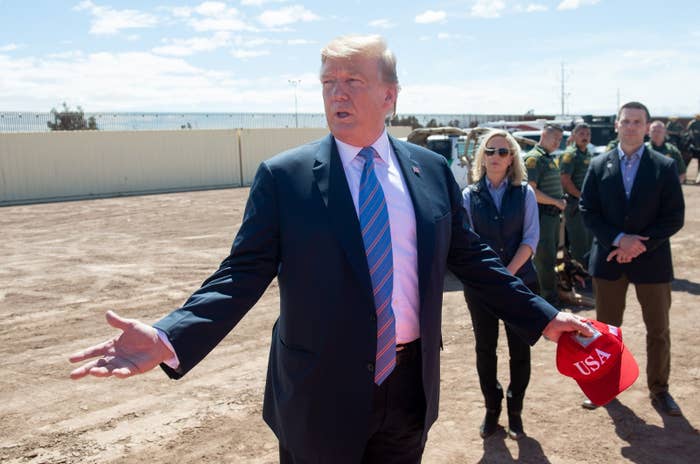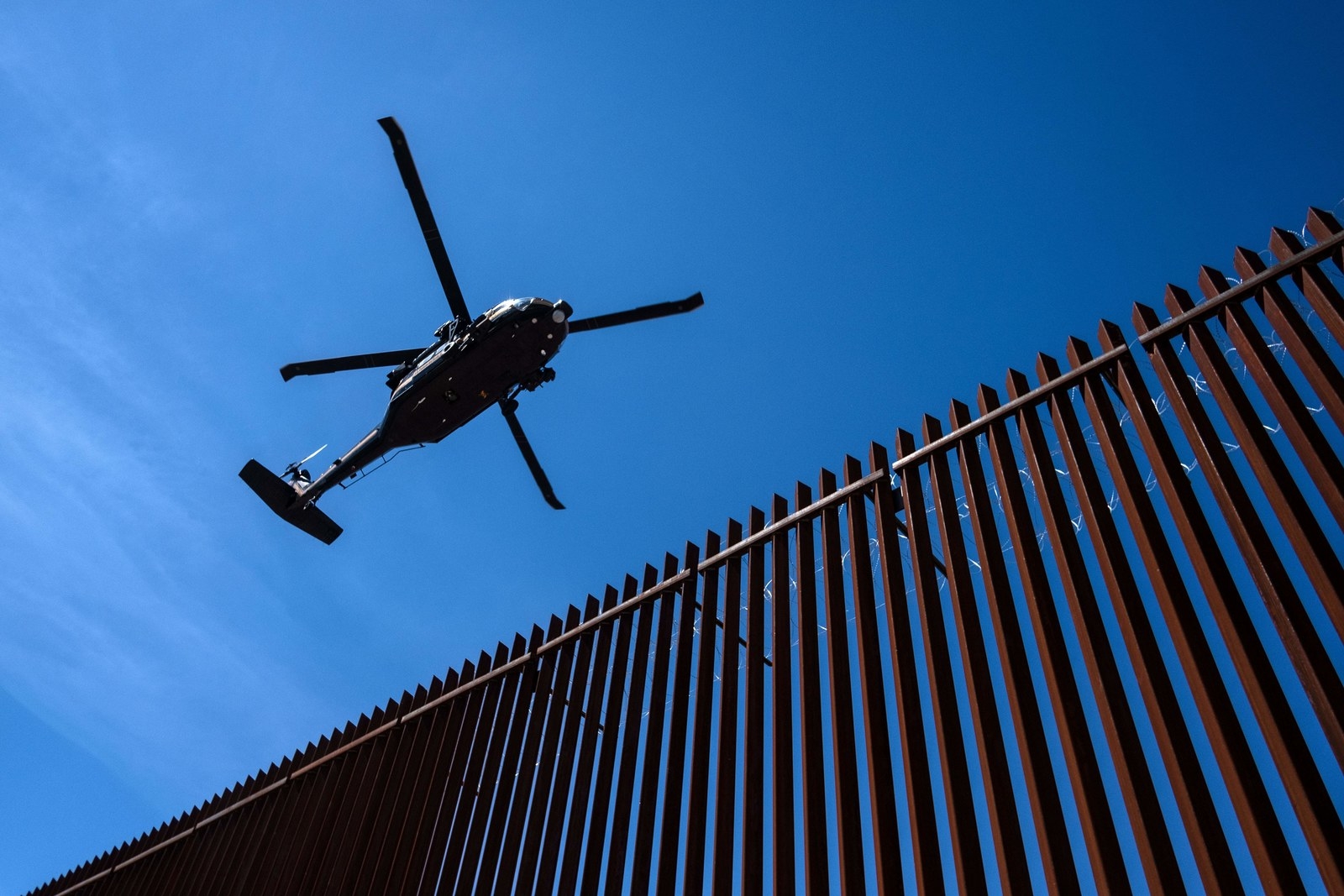
President Trump visited the US–Mexico border Friday, taking credit for a long-planned replacement fence that was installed last year and claiming it was part of his much-promised wall.
"Will soon be landing in Calexico, California to look at a portion of the new WALL being built on our Southern Border," Trump tweeted. "Within two years we will have close to 400 miles built or under construction."
Standing near the barrier in Calexico, California, Trump said, "We already built a lot of it. It looks great, it's better and more effective than the previous wall and we actually can do it faster and it is less expensive."
The 30-foot, 2.25-mile-long barrier, however, is not actually part of Trump's much-hyped border wall that became his signature campaign promise during the 2016 election. Instead, the metal slats along this section of the border will replace an old fencing that was made of landing mats from the Vietnam War.
Just checked out the new Wall on the Border - GREAT! Leaving now for L.A.
Katie Waldman, a former spokesperson for the Department of Homeland Security, previously acknowledged that the Border Patrol first requested the project in 2009, but it languished for the entirety of the Obama administration. Trump should be given credit for making it happen now, she said.
The replacement bollard fence was funded by Congress through the fiscal year 2017 DHS Appropriations Act.
David Kim, the assistant chief patrol agent for Border Patrol’s El Centro sector, where the barrier is located, told the Desert Sun last year, when construction began, that the project shouldn’t be linked to the debate about Trump's controversial wall.
“This is a local tactical infrastructure project that was planned for quite some time,” Kim was quoted as telling the Desert Sun.
Last October, when construction on the replacement border fence was completed, construction crews welded a plaque that declared it the “first section of President Trump’s border wall.”
UPDATE: President Trump’s motorcade is arriving to the border fence in #Calexico. But he’s coming to the western edge of the new barrier. So to the opposite end of where this plaque is.
El Centro Border Patrol Chief Gloria Chavez said the new barrier has helped reduce unauthorized crossings into the United States by 75% in the first quarter of fiscal year 2019. Border Patrol apprehensions of Central Americans and people from India dropped by 86% and 56% respectively.
"In the El Centro sector we have about 58 miles of border barrier. Most of it is ineffective, over 20 years old. For groups that come over it's very easy for them to cross," Chavez said at a roundtable discussion with Trump and other authorities. "For Border Patrol agents a border wall system is what works."
US Customs and Border Protection (CBP) said that construction on about 13 miles of a levee wall system in Texas's Rio Grande Valley could start as early as this week, though it's unclear when crews will actually break ground.

Laiken Jordahl, borderlands campaigner for the Center for Biological Diversity, said that while some of the Rio Grande Valley project will be considered new border fencing, because it doesn't replace any existing barriers, it's not necessarily the case. The wall will restrict wildlife movement and interfere with the flow of water, Jordahl said, but do little, if anything, to stop people from crossing the border.
Last year, 20 miles of new 18-foot-high wall was built on the New Mexico border near the Santa Teresa port of entry. The wall replaced existing 4-foot-high vehicle barriers, Jordahl said, which allowed for the passage of wildlife, water, and even people. The difference in structures is stark.
"The Santa Teresa project has been largely construed by the media as 'replacement fencing' because the new wall 'replaced' the old vehicle barrier," Jordahl told BuzzFeed News. "But the vehicle barrier was in no way a border 'wall' or 'fence.'"
Trump right now "The Flores decision is a disaster. I have to tell you Judge Flores whoever you may be, that decision was a disaster for our country." It's called the Flores settlement agreement because that was the name of the plaintiff in the 1985 case, not a judge.
During his visit to the border Friday Trump also said a 1997 court decision that set national standards for the detention, release, and treatment of children in immigration detention was a "disaster" for the country.
"We've had some very bad court decisions. The Flores decision is a disaster," Trump said in Calexico. "I have to tell you Judge Flores, whoever you may be, that decision was a disaster for our country."
But there was no "Judge Flores" involved in the settlement. Flores refers to one of the plaintiffs in the 1985 case, 15-year-old Jenny Flores from El Salvador. The 1997 settlement stems from a lawsuit filed by the ACLU, National Center for Immigrants' Rights, and National Center for Youth Law.
The Flores settlement stated that children in immigration detention must be released within 20 days.
